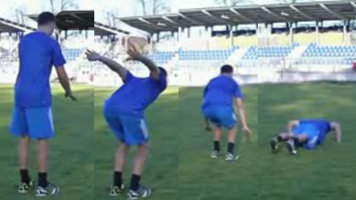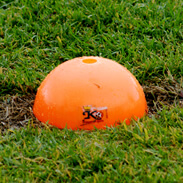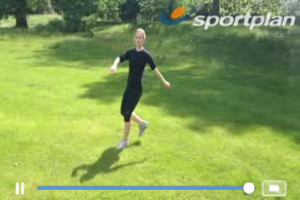Sore muscles and how to speed up recovery
- July 21, 2014
- Alex Blackman

If you're resuming training after a few weeks' rest, sore muscles are something you need to prepare for. It's important you know why muscles become sore to avoid serious injury and so that you know the best way to recover.
Here's a short explanation of what causes muscular pain, and how you can prevent it.
Causes of muscle soreness
Muscle pain most commonly stems from tension, stress or overuse - caused when you are out of condition and your muscles are not used to the physical strain you have placed on them. This often occurs in muscles that you use infrequently or after a prolonged period of inactivity. Apart from during exercise, muscle pain can also occur as a result of trauma (sprains and strains), infection (such as flu), an accident, poor posture or even stress.
Speeding up recovery from mild muscle pain
Mild muscle pain goes away by itself after a few days but you do have to give your muscles a chance to recover.
However, if you simply sit and wait until the pain is gone, you are doing the wrong thing. Rest is a poor physician. If you are able to remain active you will increase the blood flow to the injured muscles and accelerate your recovery. Make sure you avoid intensive training though, as this will only increase the chance of a severe injury. Instead low-impact aerobic exercise such as swimming or a gentle jog are ideal active recovery activities.
Early muscle pain
Early muscle pain is felt during and immediately after exercise. This burning pain is caused by lactic acid, a by-product of muscle metabolism which occurs during the anaerobic (oxygen-poor) burning of glucose.
If more lactic acid is produced than is flushed from your blood, you might begin to experience irritation and discomfort in your muscles. The lactic acid threshold is the point at which your body produces more lactic acid than your body can remove. The threshold can be increased through training to a higher level.
Delayed onset muscle soreness
Delayed onset muscle soreness is felt a day or two after exercise and is also known as DOMS. The cause of this pain lies in microscopically small hairline cracks in the muscle fibres (this is not a muscle rupture).
The damaged muscle fibres normally recover between three to five days later, depending on the intensity of the physical activity, through intramuscular coordination and extra muscle fibres are even created. After this healing process your muscles are stronger - and this is called super compensation: your body will recover above the original level - with the beneficial side-effect that the DOMS also goes away. It's worth noting though that it is possible to become stronger without experiencing DOMS.
Pulled and ruptured muscles
With a serious muscle injury muscle fibres and/or tendons are partially or completely torn. This can also cause tearing of minor blood vessels, resulting in local bleeding and bruising. This is usually immediately noticeable and normal muscle function can be entirely lost. A muscle rupture resembles a 'whiplash', a sudden sharp pain, and is often accompanied by swelling just above or below the site of the pain.
If you hear a popping or experience pain even when resting it's recommended you apply an ice bag to the area to reduce swelling and seek medical advice. You can also take an anti-inflammatory such as ibuprofen to reduce the pain.
Tips to reduce the risk of muscle pain (or worse)
Prevention is better than cure, so here are 8 tips to help you and your players remain injury-free and reduce the risk of painfully pulling a muscle:
- Thorough warm-up: from rest to exercise
- Follow this with some stretching (both static and dynamic!)
- End every training session with a cool-down: from exercise to rest
- Don't push yourself too hard: train at the right level
- Give your muscles adequate time to recover
- Rest your muscles after training, but keep moving with active recovery (see above)
- Self-massaging or sports and recovery massages can help to accelerate recovery
- Follow your exercise with a sauna / warm bath
Related Content
| Froggy Push-Ups | Guidelines for your Pre-Season Preparation | Grapevine |
 |
 |
 |
| View warm up suggestion | Read related blog | View warm up suggestion |